Licoris: types, planting and care rules

Lycoris (or spider lily) is a plant that is of interest even to experienced gardeners. It has a mysterious appearance and unusual properties. For in order for the plant to take root in the climatic conditions of our country, all the rules for planting and caring for it must be observed... In addition, it should be borne in mind that not all varieties of spider lilies can grow on the territory of our state.
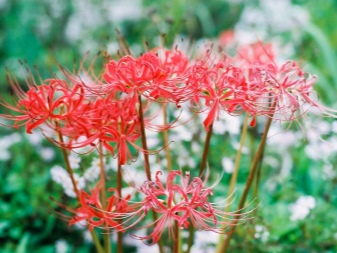

Description
Lycoris (or spider lily) is a bulbous plant. The flower is thermophilic, therefore it does not tolerate cold and frost. It is important to consider this characteristic when choosing a planting site - if you live in the northern regions, then you should refuse to grow licoris.
The plant is quite large - the diameter of the bulb is about 5 centimeters, while the leaves reach 40 centimeters in length and 20 centimeters in width. Lycoris leaves belong to the belt-like category, as they are very narrow. Moreover, they have a bright and rich green color.
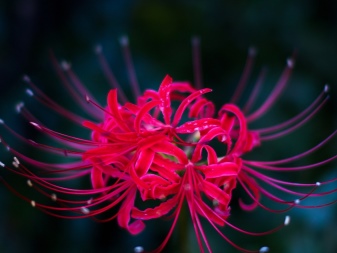
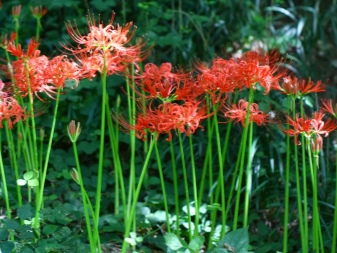
Leaves die off in summer, usually in July. Instead, stems appear from the lycoris bulb, the maximum length of which does not exceed 70 centimeters.
At the top of the stem, which has a rounded section, inflorescences with large buds appear over time. It is important to note (and for this quality, lycoris are especially appreciated by gardeners) that from 4 to 7 flowers can appear on one stem. A distinctive feature of lycoris flowers is a pronounced aroma. The flowering process begins in early September.
The shape of the lycoris flowers is rather unusual and very peculiar. So, the petals are similar in appearance to a lily, while the stamens resemble a cobweb (it is because of such features that the licoris acquired its middle name - the spider lily). Flowers can be painted in a wide variety of shades. Among the most popular flowers, botanists usually distinguish lilac, orange, white, red, golden yellow.
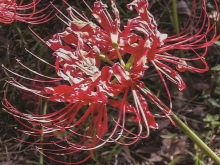

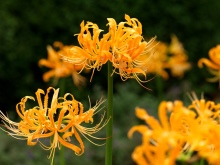
The direct flowering process of lycoris can last from 10 to 14 days. After it is over, special seed boxes appear on the flowers, inside of which are black seeds. After the peduncle has wilted, leaves appear again from the bulb. This time they will stick to the flower until next summer.
Licoris is a rather unusual flower, so it is often given magical and mystical meanings. So, for example, in the east, the flower most often grows in natural conditions. It is believed that the lycoris carries bad signs: misfortune, grief, misfortune. The thing is that in the east it is believed that the spider lily grows in those areas where human blood was previously shed. That is why it is often brought to the graves. Another meaning of a flower is a symbol and decoration of the afterlife. Superstitions regarding the spider lily have not taken root in Russia. In our country, lycoris is perceived as a positive and unusual flower.
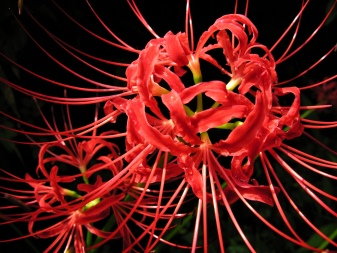
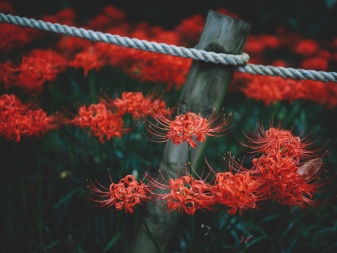
Licorice is often preferred by novice gardeners, as caring for it is quite simple. However, it should be borne in mind that the flower bulb has poisonous properties, so you need to handle it carefully. It is recommended to plant a flower in an area inaccessible to children and animals.
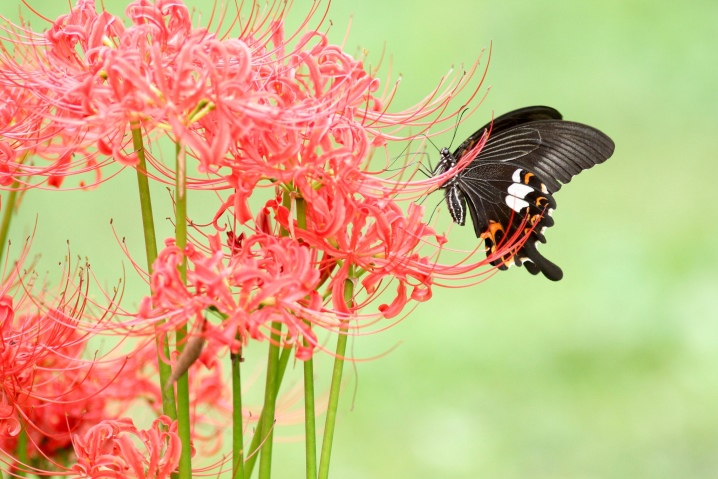
Species overview
To date, botanical scientists have identified about 20 species of spider lily. but only a few of them grow on the territory of our country. Today in our article we will consider the most common licorice in the territory of our state, as well as get acquainted with their distinctive features and characteristics.
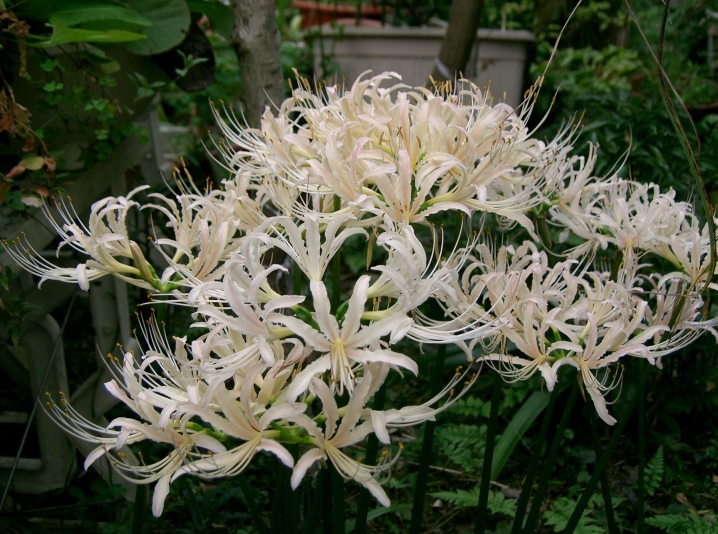
Scaly
The most important distinguishing feature of this lycoris is the presence of large buds. Usually on a peduncle, the length of which can reach 70 centimeters, an inflorescence grows, which contains up to 9 buds. The petals of the scaly variety of the spider lily are colored light lilac. In this case, the core of the flower may have a golden tint.
The petals are bent back. In the central part of the scaly lycoris, stamens and ovaries can also be found.
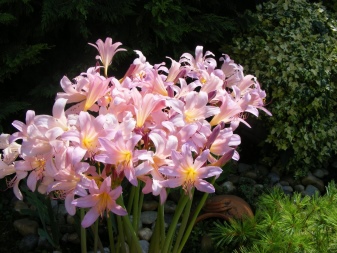
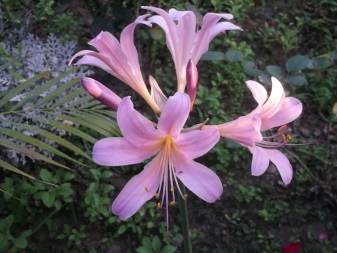
Radiant
The popular name is a mustachioed flower. He got this nickname due to the fact that the petals of the plant, located on the sides, resemble antennae in appearance. In this case, the petals located in the central part have the shape of an arc and wavy edges. The maximum plant height is 70 centimeters.
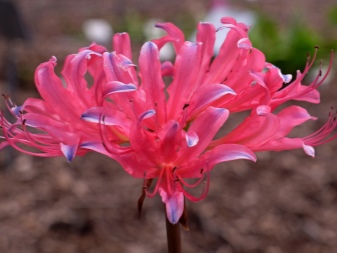

Red spider lily
Already from the name of the plant, it is clear that the flower has a blood-red hue. In height, this variety of lycoris is much lower than the variety described above. So, the maximum flower can reach 45 centimeters. The peak of development of the spider lily occurs in August. During this period, you can observe how flower stalks with a large number of buds (up to 6 pieces) begin to appear from a small bulb. The flowering of the plant makes an unforgettable impression on others.
The described varieties of lycoris are the most common and popular in Russia.
However, there are many more varieties of spider lilies in nature. So, in the wild, you can observe white and purple flowers, as well as blue-colored plants.
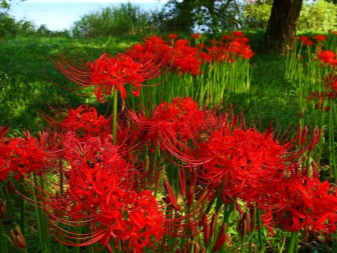
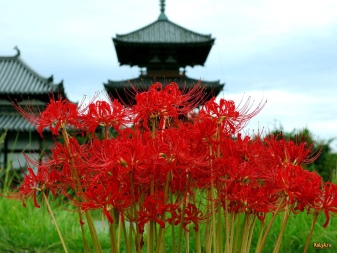
Landing features
Planting is the most important process, on the correctness of which the future growth and development of the flower depends. In order for lycoris to delight you and your household with its unusual flowers, it is important to follow all the recommendations and advice of experts.
So, first of all, it is recommended to pay special attention to the choice of a landing site... The spider lily will bloom most actively and lastingly in conditions that are as close to natural as possible. In this regard, for planting lycoris, you need to find a sunny area without wind and drafts. If you own a large garden, shaded areas of large trees are also ideal.

After you have decided on the planting site, you need to take care of the composition of the soil. To begin with, the soil must be weeded out and loosened. You should also prepare a soil mixture in advance, which should consist of sand, peat and humus (each of the components should be used in equal proportions). Be sure to build an efficient drainage system as well.
Planting a spider lily must be done with gloves. Remember that all parts of the lycoris are poisonous.
The direct planting process should begin with deepening the plant bulb into the prepared soil. The plant hole should be about 15 centimeters deep.

If you are planting several plants at the same time, make sure they are placed at least 30 centimeters apart.
The planting process itself must be carried out in the autumn. If this condition is met, then the flower will take root and adapt to a new place faster. Keep in mind the fact that the lycoris should not be expected to bloom in the first year. These processes occur only in the 2nd year of the plant's life.
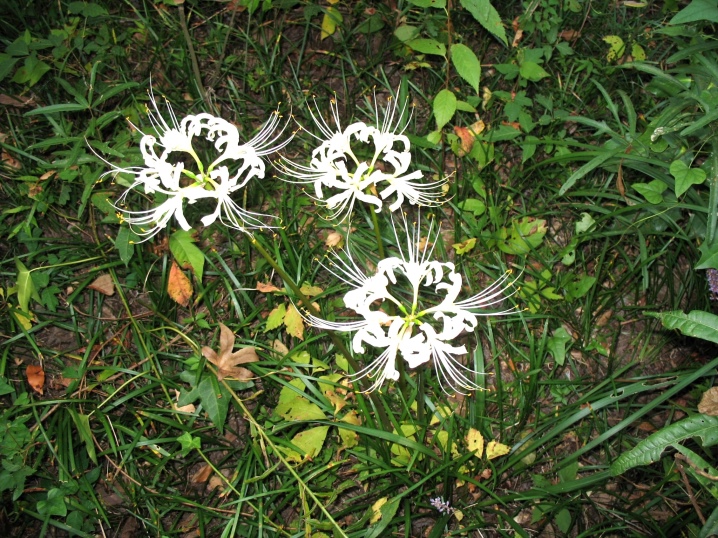
Care rules
After you have planted the lycoris on your site, you should pay especially close attention to grooming measures. In the process of growing leaves and peduncles, the spider lily needs abundant watering. At this time, in no case should the earth be allowed to dry out, the soil must always be wet.However, it is also worth remembering that at the moment when the leaves have died out and the peduncles have not yet appeared, the plant is resting. During this period, it does not need additional moisture.
Fertilizers and top dressing in the soil where lycoris grows is recommended to be applied only if you notice that the spider lily is in a depressed state. In this case, it is allowed to use any complex fertilizers and mixtures intended for bulbous plants.

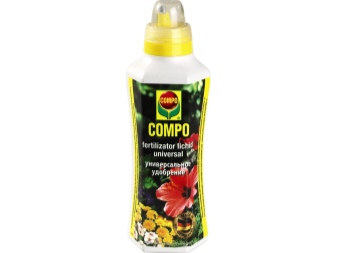
To preserve the plant in winter, you need to cover it with coniferous branches or dry grass. Before the onset of cold weather, all dried leaves should be cut off.
It is also important to note right away that lycoris is a plant that does not treat transplants well. That is why, even during planting, you should carefully select a site for it. If you do decide to transplant the plant, it is important to make sure that it is 5 years old. Only then can such manipulations be carried out.
If you follow all the described rules and recommendations, then your garden can turn into a real oasis that will attract the attention of everyone around you.

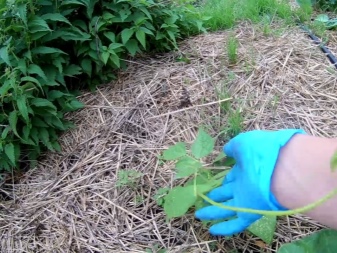
Reproduction methods
There are several methods for breeding spider lilies, but not all of them are used in gardening and are effective. So, for example, the seed propagation method is suitable for only a few varieties of lycoris.
For to be sure of the result, it is recommended to propagate a spider lily in a vegetative way... Each year, each flower produces several additional bulbs (also called daughter bulbs). After the end of the season, they can be separated, since at this moment they are already ready for independent growth and development. After flowering, you need to dig out the bulb and separate the formed parts from it.


After that, the daughter bulbs need to be transplanted to a new place, and the mother one - to the same place where it grew.
Remember that such division should not be done constantly, as it can have a detrimental effect on the ability of the parent flower to bloom.
Diseases and pests
The spider lily is a fairly resistant plant that can easily tolerate all kinds of negative environmental conditions. In this regard, it is rarely affected by pests and diseases.
However, at the same time it should be borne in mind that lycoris can be negatively affected by an insect such as a daffodil fly... If you notice that the plant is "sick", then you must immediately take the necessary measures for treatment and subsequent prevention. For this, experts advise using insecticides.


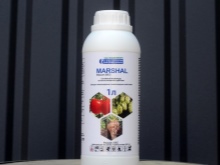
Examples in landscape design
The spider lily is a plant that is literally created to decorate your site. Bright and unusual flowers will help to add brightness and mystery to your garden. Your household, neighbors and passers-by will not remain indifferent in front of such a bright spectacle.
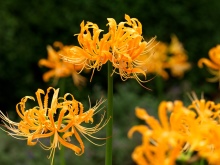
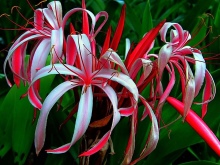

You can plant licorice yourself, combine different plant varieties, or combine the flower with other low-growing plants. So, for example, beautiful compositions can be made from lycoris and begonias, anemones, ferns and crocuses.
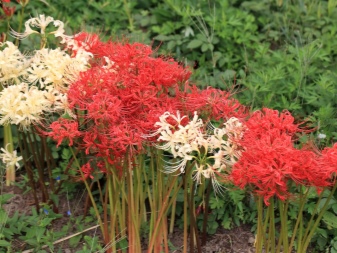

Landscape designers often use licorice in alpine slides or rockeries. Moreover, they can be successfully combined with irises, delphiniums and a pink bug.
Licoris is a rather unusual plant for our country. Not all flower varieties can take root in domestic gardens, so it is important to approach carefully the selection of a plant. With an attentive and careful approach, a spider lily can become a real decoration of the backyard. But it is important to remember that Eastern peoples are prejudiced against the flower and give it a mystical meaning.
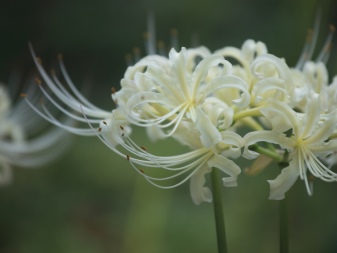

See below for more details.







































































































The comment was sent successfully.